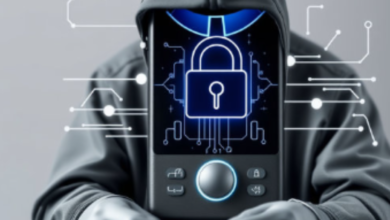YES! You CAN Keep Them Safe Online: How to Monitor My Child’s Internet Activity and Build a Strong Digital Relationship!

The digital world is a whirlwind of information, connection, and opportunity. Our kids are growing up in a world where the internet is as commonplace as a playground, and just like any playground, it has its share of potential hazards. As parents, we want to give our children the freedom to explore and learn, but we also want to protect them from the dangers that lurk online. This can feel like a daunting task, but fear not! This guide is here to empower you with the knowledge and tools you need to navigate the digital landscape with confidence, learn how to monitor my child’s internet activity effectively, and build a strong, positive digital relationship with your kids. It’s not about hovering or stifling their exploration; it’s about equipping them with the skills and awareness they need to thrive in the online world. Let’s dive in and discover how!
Safety First! Understanding the Risks and Why How to Monitor My Child’s Internet Activity is So Important!
The internet offers incredible opportunities for learning, creativity, and connection. But it also presents risks that we, as parents, must be aware of. Understanding these risks is the first step in learning how to monitor my child’s internet activity responsibly and effectively. Cyberbullying, online predators, exposure to inappropriate content, and the addictive nature of social media are just some of the challenges our kids face online. Cyberbullying can take many forms, from hurtful comments to the spread of rumors and embarrassing photos. Online predators often disguise themselves as peers or trusted adults, manipulating children into sharing personal information or meeting in person. Exposure to inappropriate content, such as pornography or violent videos, can be deeply disturbing and have lasting effects. And the constant stream of notifications and updates on social media can be incredibly addictive, leading to excessive screen time, sleep disruption, and even anxiety and depression. Learning how to monitor my child’s internet activity isn’t about assuming the worst; it’s about being prepared and proactive. It’s about understanding the digital landscape so you can guide your children safely through it. It’s about knowing how to monitor my child’s internet activity in a way that empowers them rather than scares them. By understanding the risks, we can make informed decisions about the tools and strategies we use to protect our kids. It’s also vital to remember that these risks evolve. New apps, trends, and online challenges emerge constantly, so continuous learning and adaptation are key components of how to monitor my child’s internet activity effectively.
Giving Them Wings! Balancing Safety and Independence When Learning How to Monitor My Child’s Internet Activity!
The goal of parenting isn’t to keep our kids in a bubble forever; it’s to equip them with the skills and judgment they need to navigate the world on their own. This is especially true in the digital realm. Learning how to monitor my child’s internet activity isn’t about control; it’s about finding the right balance between safety and independence. We want to protect them from the dangers of the internet, but we also want to give them the freedom to explore, learn, and connect. This can be a delicate balancing act. Too much control can stifle their independence and lead to resentment, while too little oversight can leave them vulnerable to online threats. The key is to find a middle ground that works for your family. This might involve setting clear rules and expectations for internet use, using parental control tools to filter content and limit screen time, and having open and honest conversations about online safety. As your children grow older, you can gradually give them more independence as they demonstrate responsible online behavior. Learning how to monitor my child’s internet activity also means teaching them how to manage their own digital footprint, how to recognize and avoid online dangers, and how to be responsible digital citizens. It’s about empowering them to make smart choices online, not just restricting their access. It’s important to remember that every child is different, and what works for one family may not work for another. The process of learning how to monitor my child’s internet activity is a journey, not a destination. It requires ongoing communication, flexibility, and a willingness to adapt as your children grow and their online needs change.
The Power of Partnership! Working Together with Your Child on How to Monitor My Child’s Internet Activity for a Positive Outcome!
Monitoring your child’s internet activity shouldn’t be a secret operation. It’s much more effective when you work together as a team. Involving your child in the process not only builds trust but also empowers them to take ownership of their online safety. Instead of presenting monitoring as a form of surveillance, frame it as a collaborative effort to ensure everyone has a safe and positive online experience. Explain why you’re concerned about online safety and how learning how to monitor my child’s internet activity is a way to protect them, just like wearing a seatbelt in the car. Invite them to share their thoughts and concerns about online safety. What are their biggest fears? What challenges do they face online? By listening to their perspectives, you can gain valuable insights and tailor your approach to their specific needs. Working together to set rules and guidelines for internet use is another important aspect of this partnership. When kids are involved in the decision-making process, they’re more likely to follow the rules. This also provides an opportunity to discuss responsible online behavior, such as respecting others online, protecting their privacy, and being mindful of what they share. Teaching them how to monitor my child’s internet activity themselves, in an age-appropriate way, can also be beneficial. This might involve showing them how to check their browser history, how to recognize phishing scams, or how to report inappropriate content. By working together, you can create a culture of open communication and mutual respect, making it easier to address any issues that arise. It’s about building a strong digital relationship where your child feels comfortable coming to you with any questions or concerns they may have.
Open Communication is Key! Talking to Your Kids About How to Monitor My Child’s Internet Activity and Building Trust!
No matter how many parental control tools you use, open and honest communication is the most powerful tool you have for keeping your kids safe online. Talking to your kids about how to monitor my child’s internet activity can be a tricky conversation, but it’s essential for building trust and fostering responsible online behavior. Start talking about online safety early and often, in age-appropriate ways. Don’t wait until a problem arises. Make it a regular part of your family conversations. Create a safe space where your kids feel comfortable asking questions and sharing their experiences, even if they’ve made a mistake. Listen to them without judgment and offer guidance and support. Explain why you’re interested in how to monitor my child’s internet activity, emphasizing that it’s because you care about their safety and well-being. It’s not about spying on them; it’s about protecting them. Be transparent about the tools and methods you use to monitor their internet activity. Explain how they work and why you’ve chosen to use them. This will help build trust and prevent them from feeling like their privacy is being invaded. Encourage them to be critical thinkers about what they see online. Teach them how to identify misinformation and how to evaluate the credibility of sources. Help them understand the importance of protecting their personal information and being mindful of what they share online. Learning how to monitor my child’s internet activity effectively also means teaching them how to protect themselves. This includes things like creating strong passwords, being wary of suspicious links, and knowing how to report inappropriate content. Open communication is an ongoing process. As your children grow and their online experiences evolve, you’ll need to continue the conversation and adapt your approach accordingly. It’s about creating a dialogue that empowers them to make smart choices and stay safe online.
A Bright Digital Future! How to Monitor My Child’s Internet Activity and Empower Them for Success Online!
Learning how to monitor my child’s internet activity isn’t just about preventing problems; it’s about empowering them for success in the digital age. The internet is a powerful tool that can open up a world of opportunities for learning, creativity, and connection. By working together to navigate the digital landscape safely and responsibly, we can help our children thrive in this exciting new world. This means teaching them how to use technology effectively and ethically, how to build a positive online reputation, and how to use the internet to achieve their goals. It also means helping them develop critical thinking skills, so they can evaluate information and make informed decisions about what they see and do online. Learning how to monitor my child’s internet activity is an investment in their future. It’s about equipping them with the skills and knowledge they need to succeed in a world where digital literacy is essential. By fostering open communication, building trust, and finding the right balance between safety and independence, we can help our children become responsible digital citizens who are prepared to embrace the opportunities and challenges of the online world. The digital future is bright, and by working together, we can ensure that our children are ready to shine.
Navigating the digital world with our children can feel like a daunting task, but it doesn’t have to be. By understanding the risks, finding the right balance between safety and independence, working together as a family, and maintaining open communication, we can empower our kids to thrive online. Learning how to


